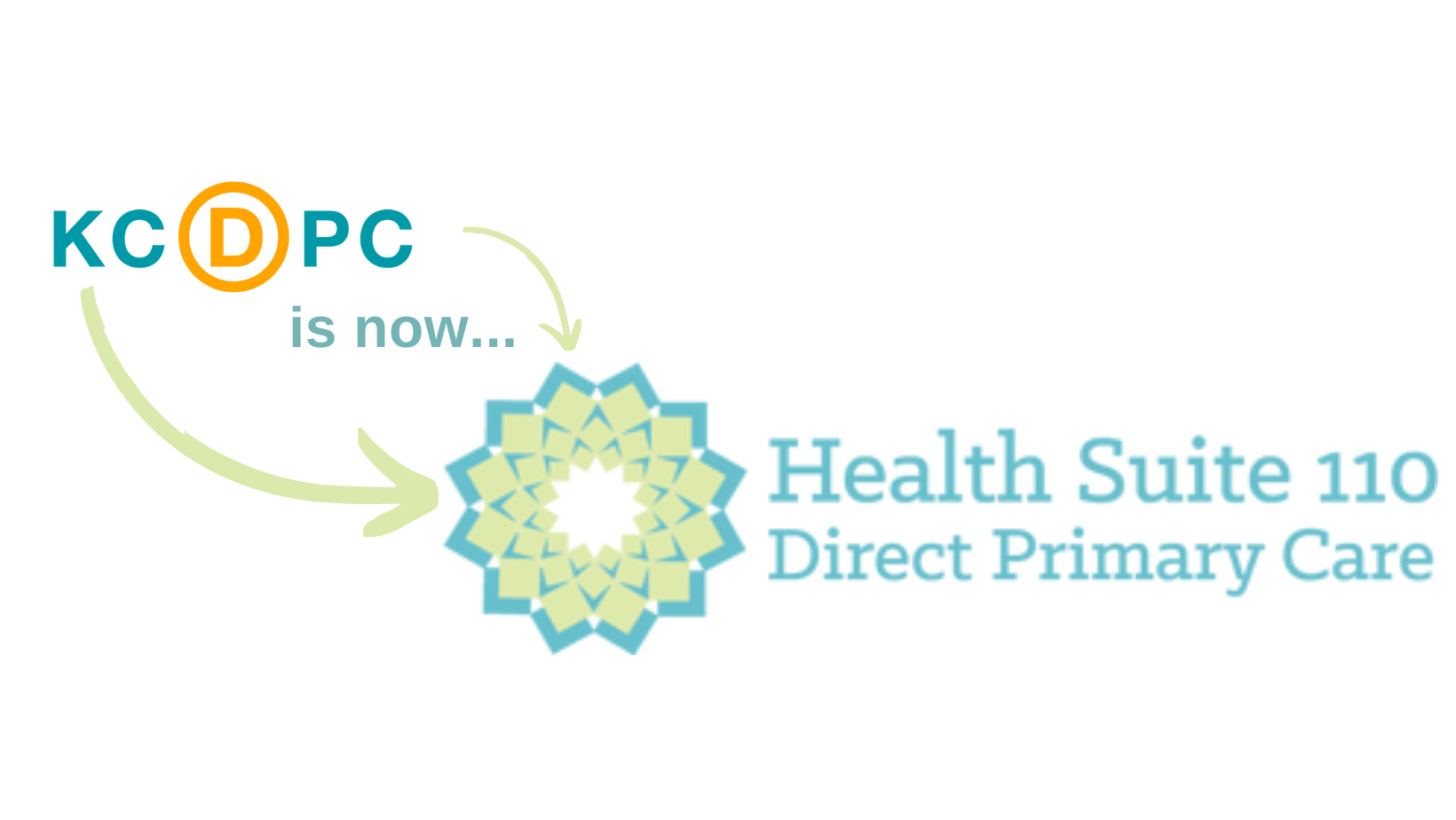
Coronavirus image courtesy of CDC.gov
Hello KCDPC Members!
I really want to make sure that you know how we plan to serve you as COVID-19 spreads through our community, so I’ve put together this blog post to explain what you can expect from us over the next few weeks to months.
First of all: you probably have enough toilet paper and water! 🙂 If you want to prepare and stock up, it would be reasonable to grab a couple weeks’ worth of non-perishable food items (in case you’re asked to self-quarantine or are caring for someone who has to quarantine) and to make sure you’ve got enough of the staples like ibuprofen/acetaminophen and your prescription medications to last a few weeks. I’ll discuss precautions you can take a bit more along with facts that have come to light regarding COVID-19 below my signature (at the end of this post).
We are fully committed to caring for our patients in the most evidence-based, safe capacity possible. In this vein, we’ve instituted a few policies to protect ourselves and our staff, which — in turn — keeps you all as healthy as possible.
Our triage algorithm, which we invite you to review, is outlined in detail here. The most important parts to highlight are:
- If you have isolated, upper respiratory symptoms and no fever, we will recommend home care and that you not come in for an in-person visit. You are always welcome to schedule a phone visit with either myself or Dr. Hazen Short, though, to talk through things.
- If you have lower respiratory symptoms and/or fever, Lauran Gress, RN or your physician will recommend a telephone visit to ascertain if an in-person visit is warranted.
- If we determine that you need an in-person visit, the visit will occur in your vehicle in the parking lot of our clinic so as to prevent potential spread and exposure to others. Seriously. In the parking lot. Though it’s not how we usually do things, it’s the most effective way to prevent the spread in the clinic.
- If you have severe symptoms, we will likely refer you directly to a hospital. From what we know thus far about COVID-19, symptoms severe enough to require hospitalization occur approximately 9-12 days after symptoms first appear.
- We are working with our lab vendor to confirm the exact specifics (like pricing and where/when the testing will be available), but we have received word that COVID-19 testing should become commercially available starting on Monday, March 9, 2020.
- Until we have clear direction from that there are enough testing kits for widespread testing, we will not be recommending testing for just anyone with symptoms of respiratory infection; we will be making this decision on a case-by-case basis in conjunction with public health officials. (The current estimate as of March 8th is that nationwide we have 800,000 tests; that’s enough to test 0.2% of the US population — though this number is increasing daily.)
I cannot be more explicit than this: if we come into contact with someone who is positive for COVID-19, all KCDPC staff & physicians who made contact with that individual will have to quarantine for 14 days. As we’re small, this may lead to a situation where we will have to close for all in-person interactions, prescription pickups, etc. for up to (and potentially longer than) a 14-day period. If this were to occur, we would attempt to still offer telephone triage and telemedicine visits. There isn’t any safe way around this.
Again, we’re putting these guidelines in place to prevent the spread of this illness to the most vulnerable around us. We so appreciate your understanding, patience, and effort to keep everyone in the KCDPC family healthy as we all see our routines upended a bit by this virus.
Don’t hesitate to ask questions or reach out.
Allison Edwards, MD & the KCDPC Team
_________________________________________
The novel Coronavirus started in China in late 2019 (the working theory is that it jumped from bats to humans at a wet market in Wuhan, China) and was given the name COVID-19 by the WHO shortly thereafter. The virus eventually spread regionally and in February 2020 we saw cases extend to every continent (except for Antarctica).
Updated March 10, 2020.
Here’s what we know thus far:
- Every single one of us has had a coronavirus infection in the past — it’s one of the viruses (along with rhinovirus, adenovirus, etc.) that causes the common cold. This novel Coronavirus (COVID-19) is just a variation (or mutation).
- This new coronavirus can cause anything from nothing to a mild cold to a potentially lethal viral pneumonia.
- Those who seem to be most affected by COVID-19 thus far are those who are more at risk to begin with: those who are older, those with multiple chronic health conditions, etc.
- The evidence out of the initial outbreak in Wuhan, China revealed:
- Median age = 59 years of age
- Estimated basic reproduction number (the number of people an infected person infects) is approximately 2.2
- The average length of time from the onset of symptoms to hospitalization was 9.5 to 12.1 days
- There have been new coronaviruses in the past — most notably the SARS (2002, 2003) and MERS (2012 – Present) epidemics; however, the mortality rate of COVID-19 (2.0% or below) is notably lower than SARS (9-10%) and MERS (36%).
- This virus spreads from person to person, though we aren’t exactly sure how. Our best hypothesis is that it is spread via bodily fluids and droplets from speaking, breathing, coughing, sneezing, etc (and potentially through the GI tract).
- Children absolutely can get the Coronavirus that causes COVID-19. Two interesting points about pediatric patients: 1) there is early evidence that they carry a high “viral load” and — combined with the fact that they aren’t great at washing hands, not touching their face, etc. — because of this may be more likely to spread the illness and 2) children who do get COVID-19 seem to have a lower mortality rate than those who are older who contract the disease.
Here’s what we don’t know:
- We don’t know if this virus will peter out as the warmer months kick in; we also don’t know if this is a one-season thing or if it will come back strong again next cold & flu season.
- We don’t know when or if we’ll have a successful vaccine to prevent against this new virus. In a late February 2020 press conference, Dr. Anthony Fauci did a great job describing how a vaccine is created (starts at about 11:00 into the clip) and how far we are away from a successful vaccine.
How to protect yourself & others:
- Just like any other respiratory virus: stay home if you’re sick!
- Just like preventing any other respiratory virus: take good care of yourself! Exercise regularly, eat nutritious, balanced meals, practice stress mitigation techniques, and get a solid 7-9 hours of sleep a night, etc.
- Just like preventing any other respiratory virus: wash your hands! A lot!
- Just like preventing any other respiratory virus: don’t touch your eyes, mouth, nose, etc., and get into the habit of washing your hands before eating.
- If you can, avoid contact with those who are sick or are caring for the sick.
- If you are not actively sick (or caring for someone who is), ear-loop/surgical masks are not likely helpful. Healthcare workers will wear masks (and often higher-rated ones than the ear-loop masks), as they have a much higher likelihood of caring for someone with the disease and are prioritizing mitigating the spread to others.
- Those who are exposed to someone with COVID-19 or those who are being tested for COVID-19 will likely be asked to self-quarantine (currently not mandatory). If your job permits, start asking your employer about work-from-home opportunities; if your job doesn’t permit work-from-home, ask your employer what their plan is to keep you safe!
- Because of the real possibility of a quarantine, stock a couple week’s worth of non-perishable foods items in a pantry. Also make sure you have the basics — like medications, OTCs like ibuprofen, acetaminophen, diphenhydramine, and pseudoephedrine, and (a rational amount of) toilet paper, facial tissues, etc.
Updated March 10, 2020 7:46 PM

Very matter of fact…..no hysteria…..great plan! We are all in this together! Thanks, Dr. Edwards!